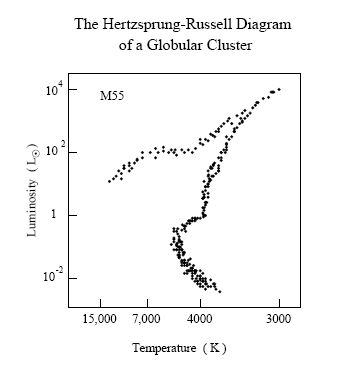Homeworks 8
Homework 8 due on 11/02/09
Problem 1
A globule in a molecular cloud (75 % H, 25 % He) has a mean density of 109 particles/ccm. Use the Jean’s criterion to find the temperature T at which a star of 2 solar masses can form. Do stars with lower or higher mass form under the same condition? Explain the meaning of the Jean’s lengths R, and calculate it for the example above. Compare the result with the typical size of globules in the Orion nebula.
Problem 2
Describe a planetary nebula. Describe the central star of a planetary nebula. What kind of star forms a planetary nebula? What kind of star will the central star of a planetary nebula soon become? Sketch the spectrum of a PN, and label the main characteristics. Estimate the lifetime of a PN.
Problem 3
Why do the orbits of the planets in the solar system all lie in a plane, and why does that plane lie on an extension of the sun’s equator into space? What happened to the material in the protoplanetary disk that did not become part of the planets?
Problem 4
Draw the HR diagram of the stars in a typical globular cluster, labeling the various parts of the diagram. What is the mass of the stars at the main-sequence turn off of a typical globular cluster. Why are these stars leaving the main sequence? How old are these stars and, therefore, how old is a typical globular cluster? Use the HR diagram below to determine the age of this cluster (Write down the steps!)
Problem 5
The mass of a black hole is 15 M⊙. What is its radius? Does a black hole have a surface at that radius? What, then, is the significance of a black hole’s radius? Suppose you measure the gravity from a black hole with a mass of 1 M⊙ at a distance of 1 AU from its center. How does the gravity compare to the gravity from the sun at 1 AU? What are the maximum masses of white dwarfs, neutron stars, and black holes?
